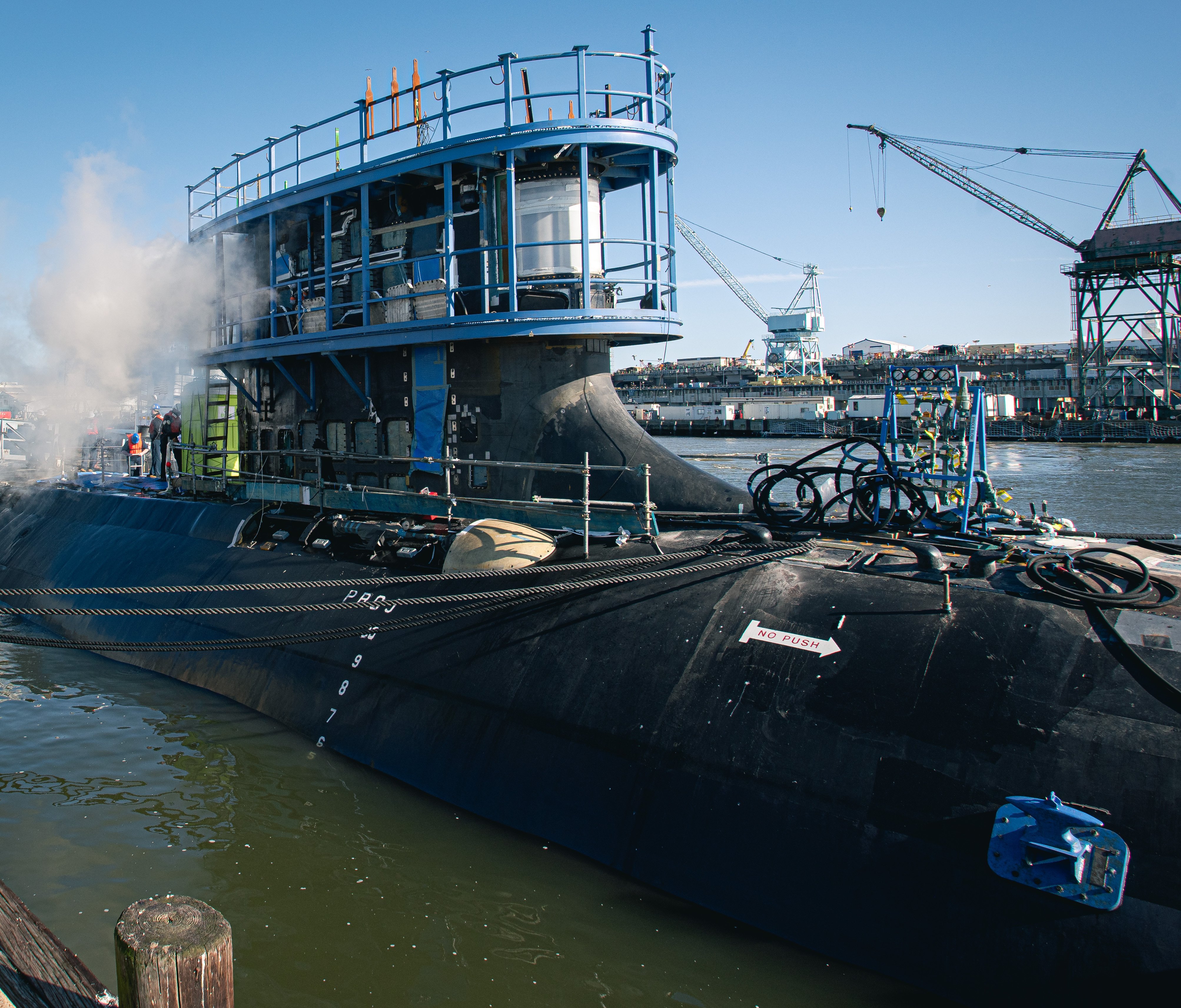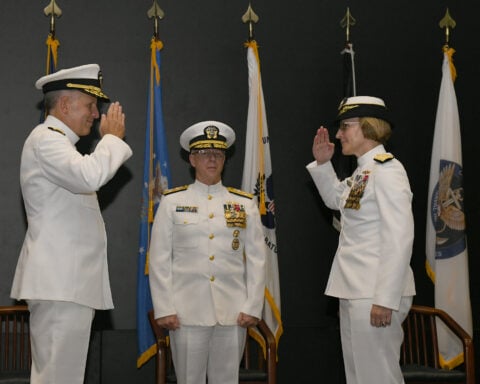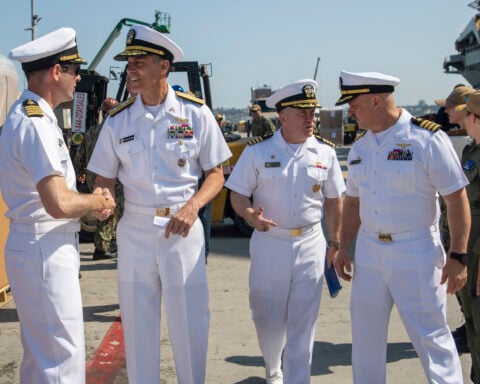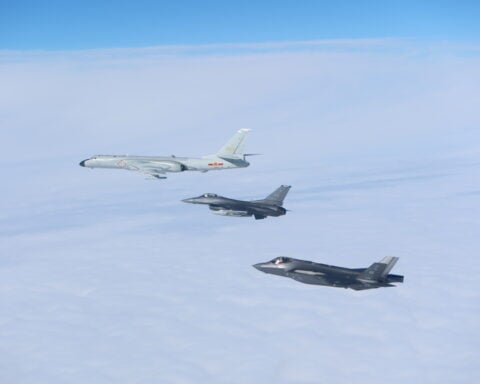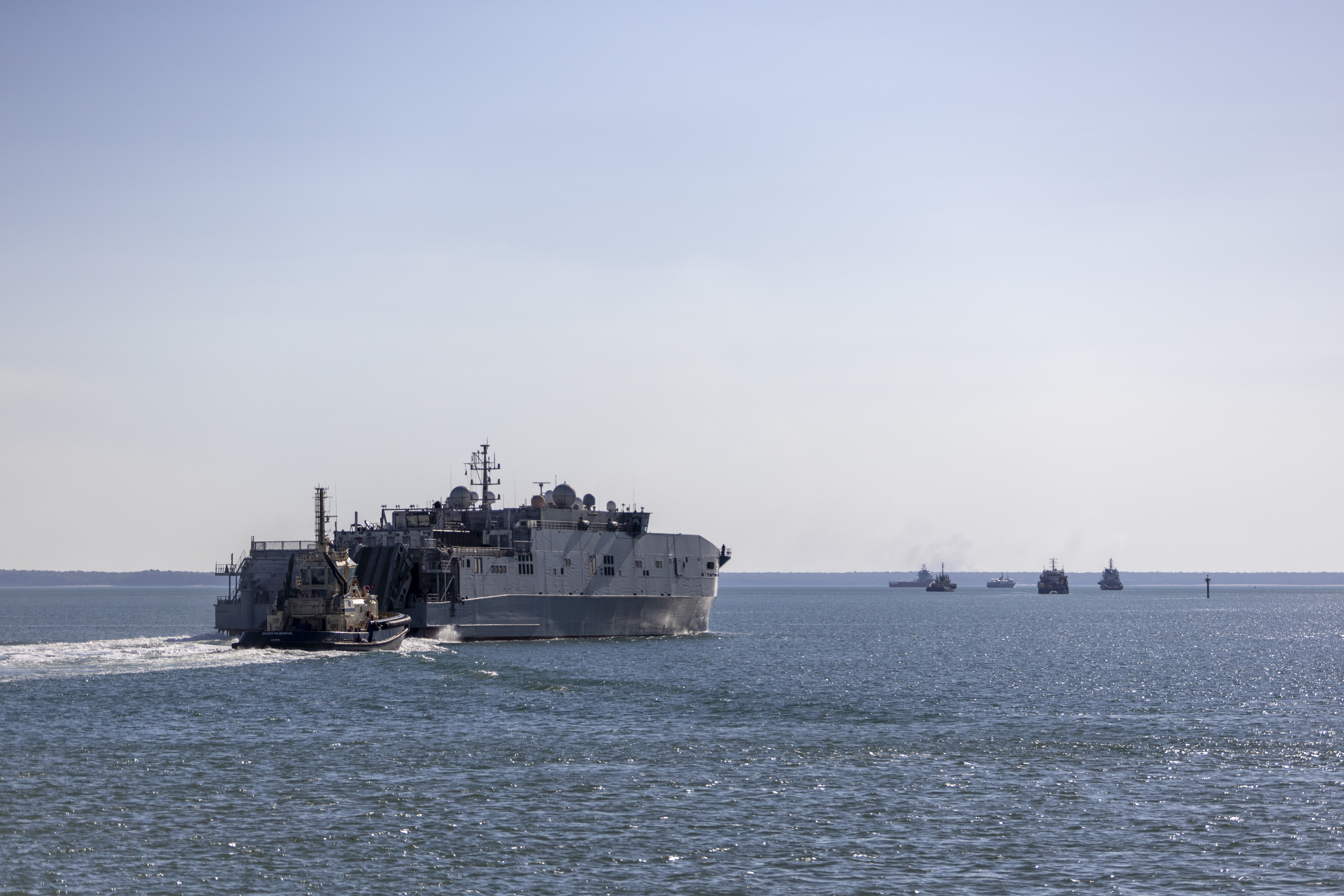
This post has been updated to correct the task force number of the Logistics Group Western Pacific. It’s Commander Task Force 73, not Commander Task Force 76.
SINGAPORE – The Navy’s Indo-Pacific logistic command is building a more robust and responsive logistic sustainment framework to support theatre operations, its commander said earlier this week.
“That’s a work in progress, we’re not where we want to be, but we’re learning and getting better every single day,” Rear Adm. Mark Melson, the commander of Logistics Group Western Pacific/Commander Task Force 73 (COMLOGWESTPAC/CTF73), told reporters during a media roundtable on Tuesday at the Singapore Airshow. Melson added that while a significant amount of progress has been made in the last couple of years in surface and air sustainment and mobility, the situation can be further improved.
Increasing the number of platforms available in theatre to support expeditionary operations is one of the main elements they are working toward. “I complete all my missions to date, but that’s also in a peacetime environment, so I do my job trying to understand what a competitive environment would look like and what kind of lift we would need in those kind of scenarios,” he said.
While he is interested in emerging technologies and capability developments for distributed logistic operations, particularly in systems that are able to operate in austere areas and available in the near term, Melson said the focus is building proficiency and capacity “in current operations for sustaining the force today.”
One key element in the theatre logistic framework is the Navy’s CMV-22B Osprey. Despite the current grounding due to an Air Force CV-22 Osprey crash last year in Japan, Melson is optimistic about the platform’s future.
“The Navy has full confidence in the CMV-22, clearly we are interested in understanding what the root cause analysis was and we want to get the CMV-22 back on the flight decks as soon as we can,” he said. Citing his experience with the MV-22B while serving as executive officer and then commanding officer of amphibious assault ship USS Makin Island (LHD-8), Melson said the CMV-22Bs provide more flexible capabilities that the C-2 Greyhounds, which were limited to daylight operations and had a smaller payload capacity. In addition, the vertical lift capability allowed the CMV-22B to operate in austere locations without a landing strip or runway.
Cooperation with partner nations, which include both shared and joint access to facilities and supplies, along with interoperability logistic operations such as replenishment at sea, form a part of building the theatre logistic framework.
“It helps us to expand operations if we need to, it helps us to continue to routinize those and makes us as robust as possible,” said Melson. He also said the U.S and partner nations employ liaison officers who coordinate fleet oiler support and are making such operations into a steady state.
The Spearhead-class expeditionary fast transport ships, or EPFs, are critical to intra-theatre surface logistic distribution, and Melson said that along with conducting regular operations with the EPFs, further experimentation is ongoing to see how to improve and expand the capabilities of these ships.
With regard to Littoral Combat Ship operations in the Indo-Pacific being more dispersed and distributed, as opposed to previously having Singapore as the main operations hub, Melson said things are “in a great place.”
“That’s been a good problem to have, as far as more platforms, more distributed and building a logistical plan to support those operations,” he said.


